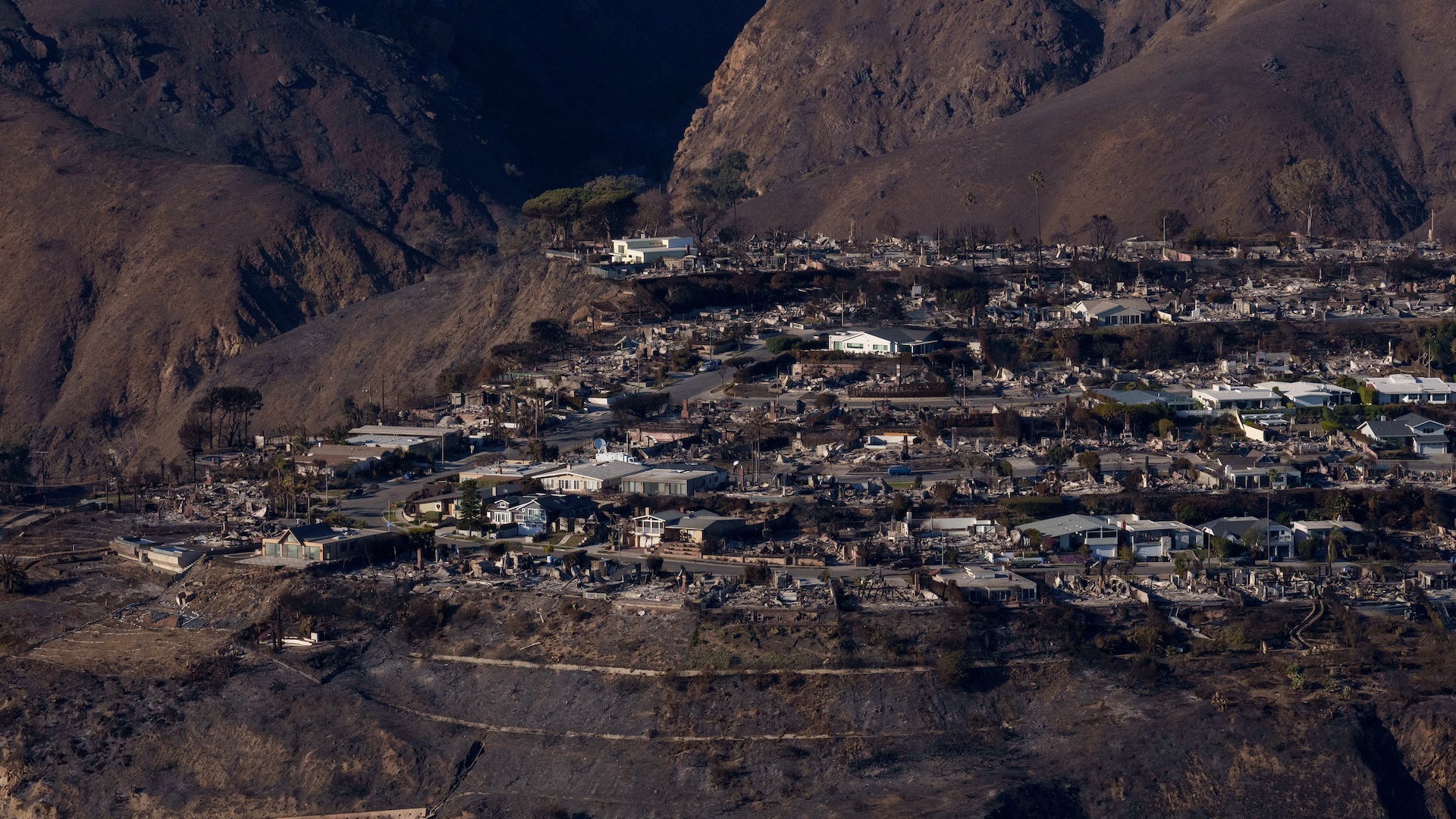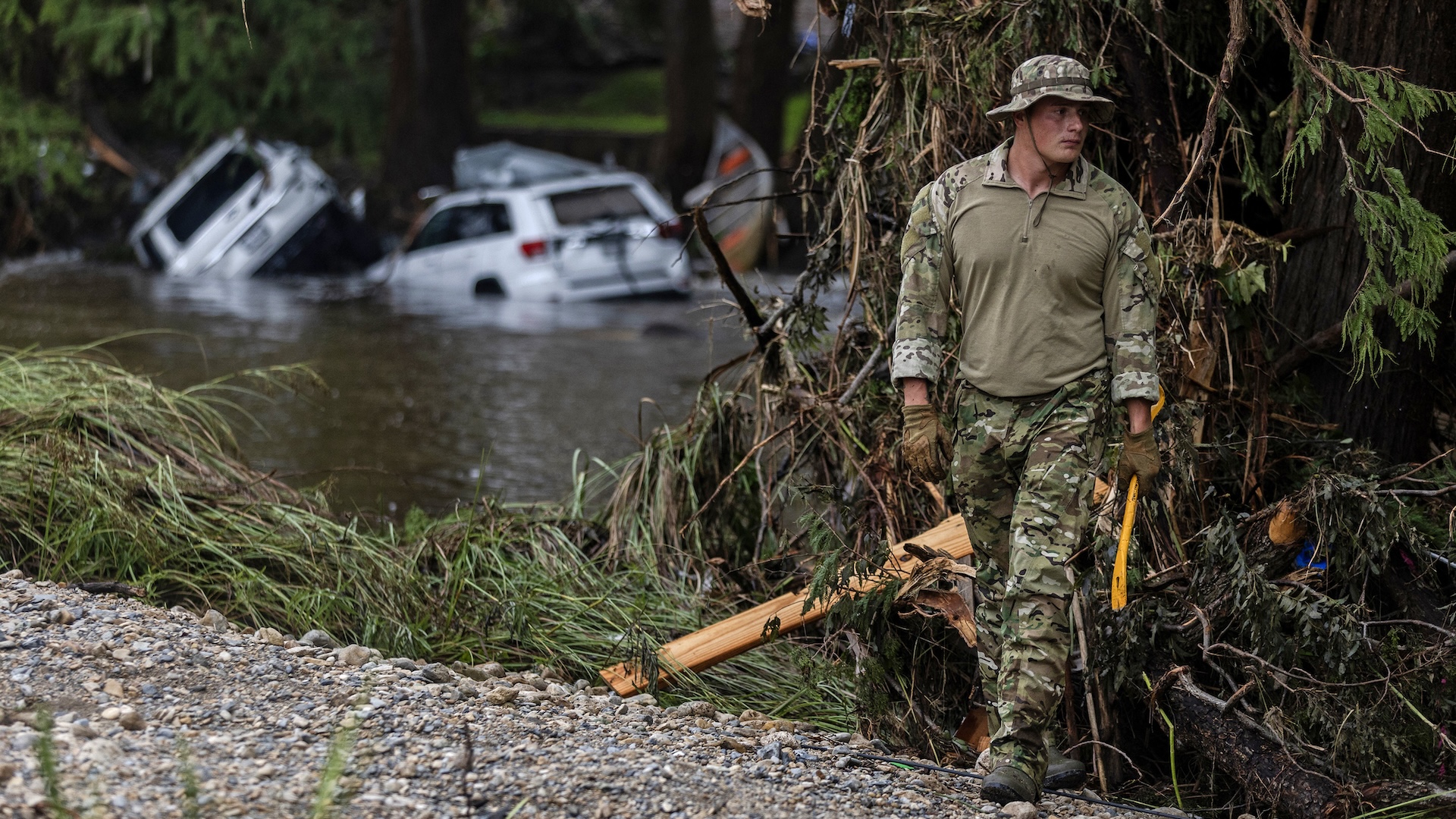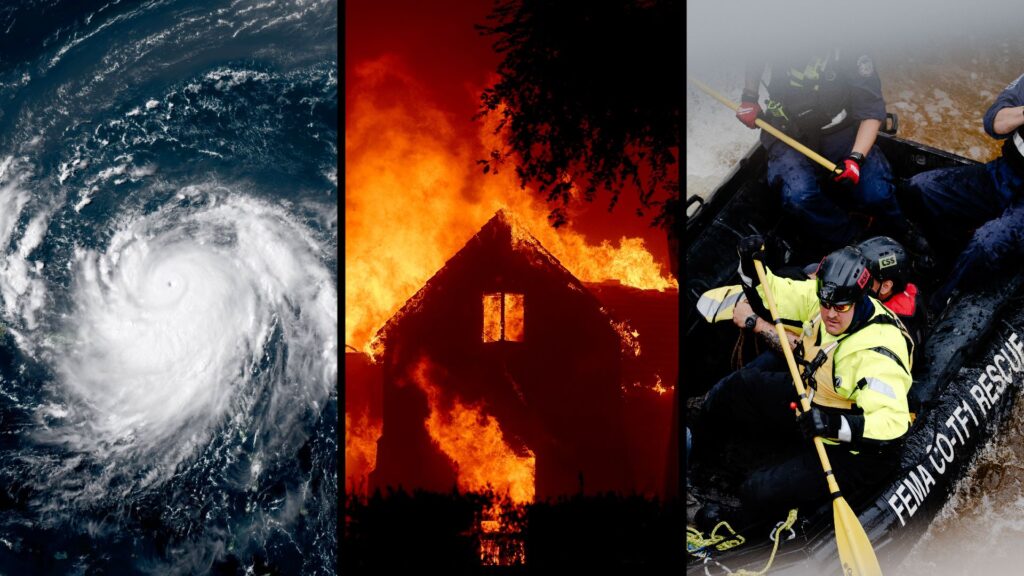Data shows that the first half of 2025 was the costliest extreme weather event on record, even when accounting for inflation.
This is also due to some extraordinary events, such as the Los Angeles wildfires. But the number of natural disasters this winter was also “extraordinary,” Paul Ulrich, a professor of regional climate modeling at the University of California, Davis, told Live Science.
you may like
This is part of a larger trend. As a result of climate change and land use change, natural weather disasters have become more frequent and destructive in the past few decades, and this trend is likely to continue.
“As long as the planet continues to warm, extreme weather events are expected to become more severe and more frequent,” Christina Dahl, climate scientist and vice president of science at Climate Central, told Live Science in an email. “When you combine this with our tendency to build communities in areas prone to climate-related disasters—think of dense shorelines along the hurricane-prone coast of Florida or small communities in California surrounded by flammable forests—we expect the economic costs of these events to continue to rise as well.”
So far, the death toll from these natural disasters has not increased dramatically, in part because of advances in weather forecasting and early warning systems that keep people away from danger, experts say. But that could change as climate change intensifies, with disasters such as flooding and regional heat waves predicted to increase in some parts of the United States and become more difficult for people to avoid.

record winter
This winter, the event that caused much of the natural disaster damage in 2025 was the Los Angeles wildfires. Wildfires in January destroyed most “high-value single-family homes” in the Pacific Palisades and Eaton Canyon, UCLA climate economist Zhiyun Li told Live Science in an email. Combined, these were the costliest wildfires in U.S. history and the costliest wildfires in world history.
Insurers Gallagher Re, Munich Re and AON estimate total losses at between $53 billion and $65 billion, taking into account direct losses such as property damage. Other estimates, which take into account factors such as property damage, reconstruction costs, capital losses such as the impact on gross domestic product (GDP), and in some cases medical and relocation costs, range from $76 billion to $275 billion.
By comparison, the entire 2018 California wildfire season, the deadliest on record, caused $30 billion in damages (adjusted for inflation), according to NOAA estimates.
The Los Angeles Fire was extremely destructive because it intensified quickly as a result of strong Santa Ana winds, extremely dry conditions, and the rapid drying of thick vegetation from previous wet years.
you may like
“You could say it was a one-two or one-two-three punch leading up to the catastrophic events in January,” UCLA climate scientist Daniel Swain told Live Science.
And unlike most previous wildfires, these fires hit expensive, densely populated urban areas.
In addition to the California wildfires, there are a number of extreme weather events occurring across the United States, particularly tornadoes. Two tornado outbreaks in March and May each caused insured losses of at least $8 billion, according to AON. Floods and winter weather have also caused a lot of damage this year.
All this contributed to very high costs in the first half of this year.
Expected to be a costly year
If the hurricane season is bad, 2025 could become the most expensive year on record.
According to NOAA data, hurricanes are the most damaging and deadly weather event in the United States. So far, the Atlantic hurricane season has been mild, but forecasters are predicting an above-average season as the season continues into November.
Since 1980, tropical cyclones have caused more than $1.5 trillion in damage (adjusted for inflation) in the United States and killed 7,211 people, more than all other extreme weather events combined, more than any other extreme weather type, NOAA data shows.
One reason hurricanes can be so destructive is that they often make landfall in highly developed areas. “One of the most desirable places to build a new home or place to live is along the coast,” said Stephen Strader, associate professor of geography and the environment at Villanova University. “It’s beautiful 99.9 percent of the time until a hurricane hits and a lot of people end up living in a very dangerous place,” he told Live Science.
The government cuts mean NOAA has stopped publishing data on billions of dollars of weather disasters. But overall, if the second half of this year matches the five-year average from July to December, total damage for the year could reach $220 billion. This means $110 billion from January to June and $110 billion from July to December.
To calculate this number, Live Science took estimates for the first half of 2025 from Gallagher Re, AON, and Munich Re (which NOAA previously said were comparable to NOAA’s own estimates) and combined those averages with NOAA’s average loss estimates for July through December 2019 through 2024.
Impact of climate change
Destruction caused by natural disasters has increased rapidly in recent decades.
According to NOAA data, in 1980 there were only three disasters with inflation-adjusted losses of more than $1 billion, and in the 1980s there were a total of 33 such disasters. By comparison, in 2024 alone there will be 27 disasters costing at least $1 billion, adjusted for inflation, and so far in the 2020s, excluding this year, there have been 115 disasters costing at least $1 billion.
“It seems like every year it’s increasing, and it’s increasing,” Strader said.
Part of this is due to human-induced climate change, which is making extreme weather events more likely and more intense.
“We’re going to see more severe storms,” Ulrich said. “Landfall will likely intensify the storm surge more quickly, resulting in even larger storm surges that will impact coastal infrastructure.”
“Extreme storms of all kinds, especially those that cause heavy rain, [is] “This is exacerbated by climate change, which means warmer atmospheric conditions and increased precipitation,” Ulrich said.
This effect was also seen during the Texas flash floods in July. That’s when a major storm lowered water levels in the Texas Hill Country by about a foot (30 centimeters) in just a few hours, causing the Guadalupe River to rise more than 26 feet (8 meters) and burst its banks.
According to Climate Central, flood damage is expected to increase by 147% in Louisiana and 74% in Florida by 2050 compared to 2020. Much of that will be caused by climate change, Climate Central found.
But it’s not just storms that will become more intense due to climate change. “We know that climate change is increasing the frequency and severity of fires. Hotter, drier and windier conditions greatly facilitate the spread of fires,” Dahl said.
The rapid transition between wet and dry conditions that caused the Los Angeles fires could also be exacerbated by climate change, research suggests.
Overall, “there is abundant and overwhelming evidence that climate change is increasing the severity and likelihood of extreme fire conditions in the American West,” Swain told Live Science.

Expanding eyeball
Changes in land use also contribute to increasing damage from natural disasters.
“We have this two-headed monster going on in the world, and that is the climate is changing. [worse] At the same time, more people are living in the United States and around the globe, which increases our exposure, he added.
One of the factors that makes natural disasters more destructive is the expansion of urban areas. In 2017, 3.3% of the total land area of the United States was urban, up from 2.2% in 1982 and just 0.8% in 1949. Population density has also increased, with the urban population rapidly increasing from 167 million in 1980 to 249 million in 2010.
This means more buildings and infrastructure will be destroyed, weather events are more likely to hit urban areas, and more people will be affected if these areas are hit. Experts call this the “expanding eyeball effect.”
Strader noted that the growing bullseye effect creates a special risk for tornadoes.
Strader said “we’re not seeing any real change in the number of tornadoes” and the tornadoes aren’t getting stronger. In fact, he said, more homes and infrastructure were built in tornado-prone areas, which now causes more damage from tornadoes.
Additionally, we are altering the land in ways that make it more prone to some disasters. For example, replacing open land with roads can make flooding worse.
“If we had changed the environment to have more pavement instead of open spaces where water can seep easily, the risk of urban flooding might have increased, even if the rainfall remained the same and the size of the cities remained the same,” Swain said.
Our actions are also exacerbating the risk of wildfires. In the past, small, low-intensity fires occurred regularly to clear brush and help forests regenerate across the American West. But after a century of fire suppression, the wilderness is overgrown with grass. “There is a lack of beneficial natural fires,” Swain said. This creates a huge build-up of fuel for wildfires, which can flare up and become larger and more destructive when they start, Swain said.
Number of deaths and damage amount
Even though natural disasters are becoming more frequent and destructive, more people are not dying as a result. Experts say the main reason for this is improved warning systems and forecasts, which help people reach safety in time.
But as climate change worsens, predictions alone may not be able to prevent an increase in deaths.
“There are two big ones. [disaster types] “What I’m concerned about is the heat and the flooding,” Strader said, adding that “when we have a very high heat wave, large parts of the country are affected, but there’s no escape from the heat, especially when people are vulnerable or don’t have the resources,” noting that minorities are especially affected.
Cities can become like “concrete ovens,” and while these extreme weather events don’t necessarily cause massive infrastructure damage, they can be as deadly as a major hurricane or wildfire. For example, a heatwave in the Midwest in September 1995 killed 872 people and caused $2 billion in damages (adjusted for inflation), according to NOAA. However, Hurricane Harvey in 2017, which hit Texas and Louisiana, was the second costliest extreme event on record, causing $160 billion in damages (adjusted for inflation) and killing just 89 people.
Experts also say government policies could lead to even more deaths in the short term.
The government is considering cutting funding and staffing at the Federal Emergency Management Agency (FEMA), Forest Service, and NOAA. These cuts are likely to have significant impacts both in the near and long term, experts told Live Science.
“The cuts that are being made now are very likely going to increase catastrophe losses. This is really a self-inflicted wound,” Swain said. “The savings from cutting these programs will almost certainly be far less than the costs of higher disaster losses, which are objectively very short-sighted decisions.”
Source link

